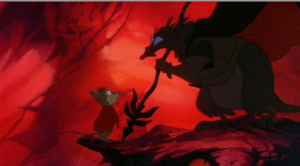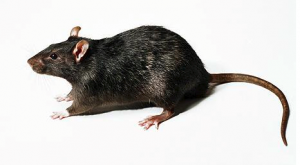By Jimmy Loulegend
Let me preface this with a bit of a qualifier: I loved the movie “The Secret of NIMH” when I was kid. I grew up thinking rats were relatively-benevolent, highly-intelligent creatures. That being said; I grew up in the suburbs. Rats weren’t a big problem on my cul-de-sac. But when I was 19, after a misguided plan to “take a year off school,” I got a job at a local bistro downtown washing dishes. I lived a couple blocks from the restaurant in a ramshackle rental property in a “transitional neighborhood.” I’m not sure what it was transitioning from or to, but I liked the idea of paying my own bills, and playing my music as loud as I wanted when I wanted. I know, that old chestnut, but those are mighty powerful motivators before hitting your third decade.
Anyway, rat control had not been a concern of mine until entering this brave new world; that quickly changed. Todd, one of the line cooks who worked up front, told me what I thought was a hazing story every new employee was told before they got their first pay check. He sat me down during a cigarette break and relayed to me something that felt more “sasquatch” than cautionary:
Apparently, this particular bistro was built on the grounds of an old sewage treatment facility (I know already dubious), which much like “NIMH” produced, by speculative means, a kind of super rat. The rats were more resistant to pedestrian exterminator techniques, and the bistro had to use these big traps the owner had designed himself. I raised my eyebrows at the tale’s end with a look that was supposed to mean, “well, can I see one of these traps?” but apparently looked more like “next topic, please” because Todd immediately turned his attention to a profane  piece of graffiti written on an adjacent restaurant’s rear wall and said: “My friend Kevin put that up a few days ago – dude’s a trip.”
piece of graffiti written on an adjacent restaurant’s rear wall and said: “My friend Kevin put that up a few days ago – dude’s a trip.”
A couple days later, I started seeing the rats. And yes, they were strange looking, completely unlike the pet-store variety I’d come across at the mall. They were big, like kitten big, with long hairless tails and scary black eyes, and greasy grayish coats that made them appear constantly wet. They weren’t afraid of me either. Every trip to the dumpster meant another rat sighting, more of an interaction actually, because these things didn’t scurry or run; they just sat there – staring.
One warm summer evening, I was making my usual end-of-shift trip to the trash bin, and I noticed the owner squatting behind the dumpster working on something. He was a round little fellow with a lot of energy and a fairly even hand with his employees – completely approachable in other words. “What’s up Charlie?” I said, lifting the dumpster’s plastic lid. He didn’t say anything. That’s when I saw it: the rat trap. It was like a cross between a dollhouse and a tire swing. He smiled up at me, teased a little knob on the side of the contraption, and it opened up. The inside of this thing was more like a Rube Goldberg device than it was a rat trap. There were springs and wires, and what looked like a coat hanger stretched across the device’s wooden beams. A single piece of white bread lay at the base. Before I could really inspect the thing, Charlie closed it, smiled at me – coyly this time, and walked away. I couldn’t wait to see what it could do.
dumpster’s plastic lid. He didn’t say anything. That’s when I saw it: the rat trap. It was like a cross between a dollhouse and a tire swing. He smiled up at me, teased a little knob on the side of the contraption, and it opened up. The inside of this thing was more like a Rube Goldberg device than it was a rat trap. There were springs and wires, and what looked like a coat hanger stretched across the device’s wooden beams. A single piece of white bread lay at the base. Before I could really inspect the thing, Charlie closed it, smiled at me – coyly this time, and walked away. I couldn’t wait to see what it could do.
The next morning, I excitedly ran out to the dumpster to check for a kill. Nothing. The next day, slightly less excited, I checked it, and still nothing, but this time the bread was missing. Charlie had apparently re-baited it, because a new piece of bread was on the trap floor the following morning… and gone again the day after. Eventually, I stopped checking the trap and just accepted it as another bit of discarded bric-a-brac around the dumpster. That is, until about a month later. I decided to open it up, you know, just to see how the thing was supposed to work. I tugged on the lever, and the hinges creaked as the door fell open. What I found inside sent me stumbling over my trash bags, and sucking in deep, panicked gulps of air. There, within the recesses of Charlie’s ingenious rat trap was an entire family of greasy, beady-eyed rats. Apparently, a pregnant rat had taken up shop in the trap, and let loose her brood. They were squirming all over each other; it was gross. Charlie’s trap really sucked as far as traps go. After, I showed him the rat house he’d created, he called in a professional exterminator, and their numbers quickly dwindled.
 Hindsight tells me these weren’t super rats, but ordinary city rats that, through conditioning, no longer feared humans and their homemade attempts at rat control. What’s the moral of this story? I guess it’s “some things, particularly rat control, Why not get service from a pro? Your idea of a trap could be a rat’s idea of subsidized housing… in a transitional neighborhood of course.”
Hindsight tells me these weren’t super rats, but ordinary city rats that, through conditioning, no longer feared humans and their homemade attempts at rat control. What’s the moral of this story? I guess it’s “some things, particularly rat control, Why not get service from a pro? Your idea of a trap could be a rat’s idea of subsidized housing… in a transitional neighborhood of course.”
Jimmy Loulegend is a professional writer and the man behind the blog Scary Rat Control Tales. Jimmy says; “I like a good scare. I like compiling other people’s stories, and I enjoy writing my own. I also like feedback; it makes my world go ’round. So feel free to send me your scary stories, rat and non-rat alike.”




